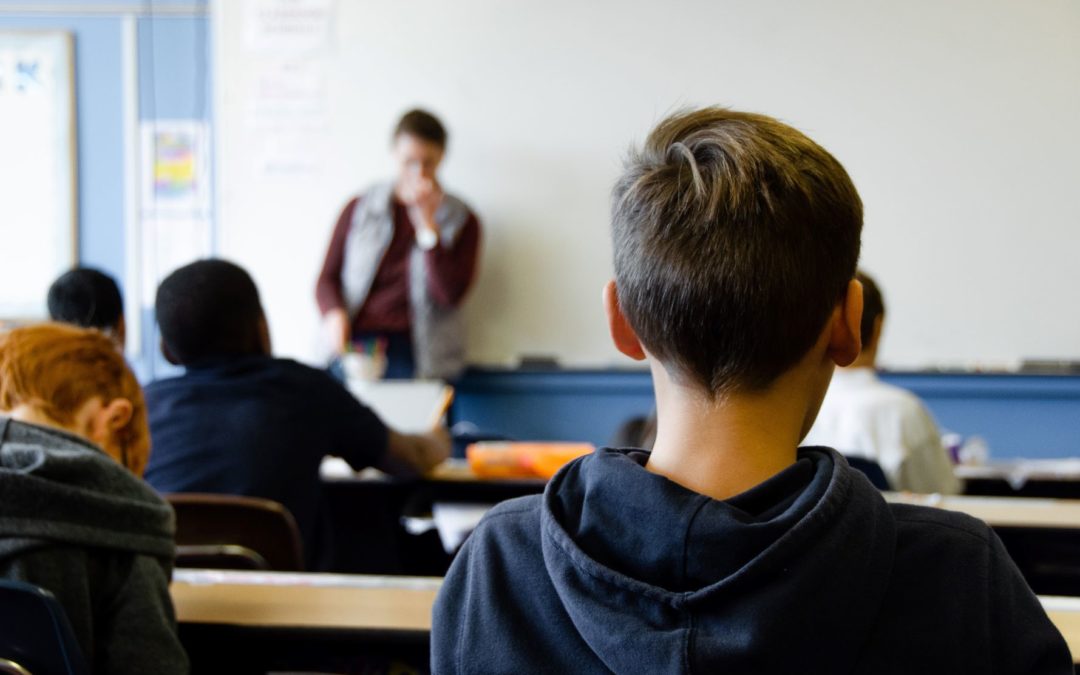In Quantitative Analysis, they teach you to stick with one independent variable to assure validity and reliability in your results. In real life, change often occurs due to a confluence of variables. Not only is today’s student population unlike that of previous generations, but it is also vastly different from pre-COVID classrooms. It is easy and obvious to pin negative shifts on the pandemic, but other variables have contributed to the change as well. Perhaps the most significant one is a changing demographic in your school. As states open more scholarship and tuition assistance programs to private schools and as more parents seek an alternative to the political agendas seeping into curriculum, faith-based schools are welcoming a new demographic of students into their classrooms.
Veteran teachers could finish the following sentence with many new and undesirable responses: “I never had ________ (a fight, swearing, a defiant student refusing to work, a student having a meltdown) happen in my classroom until the last couple years.” Teaching has always been a demanding career due to the long hours, paperwork, and challenges in dealing with parents and students. Enter COVID. In the fall of 2021, students of all ages returned to the classroom more emotional, more defiant, less motivated, lethargic, and struggling academically. “Students and teachers have lost so much of what used to keep them motivated” (Bauld, 2021). Test scores in math and reading have plunged, and the gap in test scores for students of low vs. high socioeconomic status has grown significantly (Kuhfeld, Soland, Lewis, & Morton, 2022).
The double whammy of COVID is that not only are students behind academically but also the classroom is more difficult to manage in a way that ensures learning. A combination of adopting traditional management techniques and embracing new ones is the key to creating an effective learning environment.
1. Prepare teaching materials the night before or early in the morning. When the teacher is hunting around for a book or the manipulatives, it is an invitation for rowdiness in the classroom to ramp up.
2. Have bell-work up on the board and ready when students enter the room. In the elementary classroom this may include the day’s schedule and morning procedures. In upper school, bell-work can be used to review information from the previous day or launch the next topic.
3. Begin class with prayer. Pray specifically for students and the desired behaviors and attitudes they need to exhibit for successful learning.
4. Have classroom procedures posted and practice them. Keep the list short so that it is easy to remember and follow. Procedures should include limits on when students can get a Kleenex and throw away trash; these are often distractors and excuses for getting out of seats. When a procedure is not followed, practice it again.
5. Insist that students sharpen pencils and use the restroom before class begins. One teacher at our school has a “No restroom in the first 15 minutes and last 15 minutes” rule to protect instruction time.
6. Teach levels for talking. Level 0 is silence and Level 5 (reserved for recess or the gym) is shouting. When students are working in pairs or small groups, Level 2 is the ideal volume.
7. Call out positives. “I like the way Marigold is prepared for class with her planner, textbook and notebook.” “Kerry’s small group is being very productive.”
8. Teach expectations prior to launching a task. Pre-assign work areas and give guidelines for group work. Include points for behavior in the participation grade.
9. Pray for yourself and your colleagues. Jeremiah 33:3 reminds us that God is ready to do “great and mighty things” when we call on Him in prayer. When a colleague is struggling, stop talking and start praying! Praying for one another is a tremendously uplifting and strengthening spiritual discipline. Praying for our students can bring about change in their hearts and ours.
The effects of COVID and at-home learning (or a lack thereof) are not going away anytime soon and will likely be the source of much research in the coming years. Additional factors such as the prevalent use of social media, the eroding family structure, and the fact that we live in a fallen world, guarantee that the years of tidy rows of compliant students with hands folded are long gone. Teachers need more support than ever before. Support should come from training during professional development, extra aides in the classroom, mental health specialists, and a firm discipline structure within the school. One perpetually disruptive student can wear down the teacher and consume learning time. Schools need protocols for dealing with these students with firmness and consistency.
Classroom management can make or break a teacher; it can be the difference between a focus on learning or a focus on struggling for control. There will be bad days, but there is also potential for glorious ones. Teachers who are struggling need to partner with those who have honed successful strategies. Administrators need to be quick to encourage teachers and support them with definitive action. Teaching takes grit, determination, and a willingness to get up in the morning and do it all over again. “Be steadfast, immovable, always abounding in the work of the Lord, because you know your labor is not in vain in the Lord” (I Corinthians 15:58).




